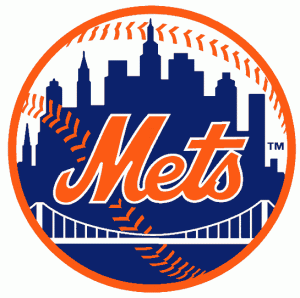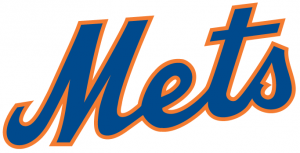Before a pitch was thrown in 2023, New York Mets fans would’ve been more than a little hopeful of their franchise making their first World Series since 2015. A successful 2022 campaign in the NL East put the franchise within striking distance of securing the division title, had it not been for a late charge from the Atlanta Braves. Their subsequent demolition in the best-of-three series with the San Diego Padres ended their hopes of winning it all. They lost star pitcher Jacob deGrom in the offseason, but they did spend big on bringing in a squad of players capable of going deep into the postseason.
Their total spend of $806.1 million is the largest sum of money spent by one team in a single offseason in MLB history. But sadly that has not manifested into the success owner Steven Cohen would’ve been hoping for.
The team’s good form throughout 2022 gave reason to believe that this year the franchise could capitalize on their newfound momentum. However, the reality is that the Mets have gotten worse, a lot worse. Their record of 59 wins and 68 losses has them in fourth in the NL East, 23 games out of first.
That is a very poor return for such a hefty investment. They should have been aiming for a divisional title at the bare minimum. And while the first place Braves have been excellent this year, it cannot forgive the disaster taking place at Citi Field this season.
So where exactly did it go wrong for the Mets and how can they get out of the mess they find themselves in?
Coming off a 100-win campaign in 2022, it should have been a sign that the Mets meant business in 2023, but when the franchise brought in the likes of José Quintana, David Robertson, Kodai Senga, Omar Narváez, and Carlos Correa to bolster their ranks, they moved further up the pecking order as nailed-on World Series contenders. MLB betting sites even had the Mets as a possible World Series champion in preseason. That sentiment was solidified further when they brought in star pitcher Justin Verlander from World Series Champion Houston Astros. The three-time Cy Young Award winner may have turned 40 in February, but the legendary pitcher had all the credentials to make an impact in New York this season.
Before joining the Mets, Verlander was 244-133 with a 3.24 ERA and 3,198 strikeouts in 17 seasons. Expectations were understandably high, but he has failed to deliver. The same goes for Max Scherzer and Carlos Carrasco.
Granted all three starters are aging/entering the twilight of their careers, but the drop-off should never have been this drastic. Mets pitching has been inefficient and poor; at the halfway point of the season no team had a worse strike percentage with only 61.9% of pitches earning strikes and 28.6% of their pitches coming from behind in the count.
Those figures have not improved much since and they don’t lie. Scherzer and Verlander in particular have endured arguably their worst seasons to date and what looked like a formidable pitching combination turned into a significant contributor to the team’s underwhelming performances; and the decision to trade both before the deadline.
Things aren’t much better on offense with the Mets, as their bats are suffering one of their worst seasons ever. The Metropolitans have probably scored more runs than they deservedly should have this season, as they have elevated production when having runners in scoring position.
Also, Pete Alonso is simply raking it. The aforementioned Alonso is currently third in home runs this season with 39 and he’s second in RBIs with 95. The 28-year-old Florida native has been their best hitter by far this season and if it weren’t for him, the Mets would be in a considerably worse situation. Francisco Lindor, Jeff McNeil and Starling Marte have all been poor this year, as the offensive lineup, as a whole has consistently struggled to go on any notable run of form this season. The Mets are a mess on both sides.
Their performance up until this point has been so poor that the most expensive team in baseball history had to do a full U-turn and sell-off at the trade deadline. The most noteworthy departure was that of Scherzer who ends his disappointing run with the Mets this season for a move to the Texas Rangers. The 39-year-old claimed he made the move because of the franchise’s plans for the future, stating they had plans to compete in 2025 or maybe even 2026, but on the basis of this season, it could be a longer wait than that for the Mets.
The trade set the franchise back $35 million but they received a quality prospect in Luisangel Acuna in return. Verlander followed suit shortly after waiving his no trade clause in order to facilitate a move. Before him came closer David Robertson, who left for the Miami Marlins in return for two minor leaguers. Mark Canha, Dominic Leone, and Tommy Pham closed out the names of departures as the Mets completed their task of dismantling the largest payroll in MLB history.
Critical onloookers will likely suggest the trade deadline business was emblematic of a failed project and a poor effort to improve the Mets’ fortunes for 2023. In reality, it’s recognition of where the franchise has gone wrong in recent months and the honest assessment that was required, if the team were to acknowledge its problems and attempt to fix them. In many ways, the Mets have started the process of removing many of the problems that saw the franchise collapse from 101 wins to a projected 76 this season.
Many of those traded at the deadline were free agents soon enough and and while Scherzer and Verlander’s departures will sting a bit more, both were aging and had failed to deliver what they required from them anyway. The Mets will look very different next year and that’s not a bad thing. Cohen will be hoping the farm system delivers for the franchise now but in a lot had to change if the New York outfit were to challenge again in 2024, or even 2025 and they’ve set about that task in the right way.






